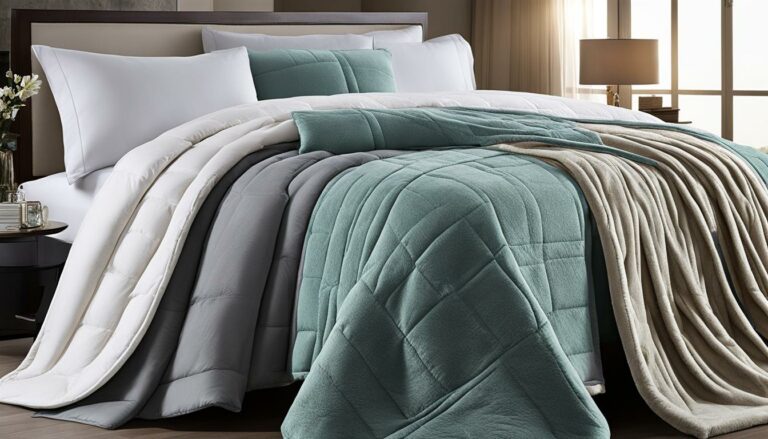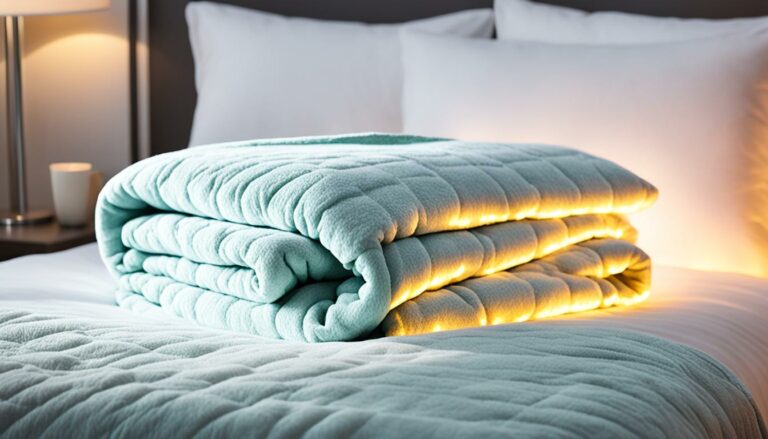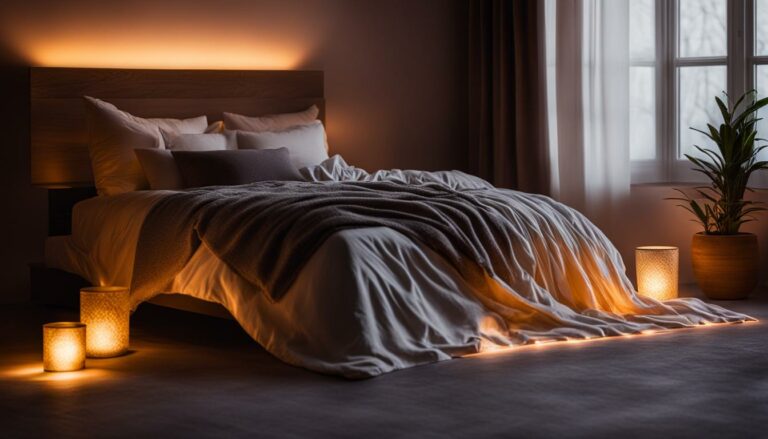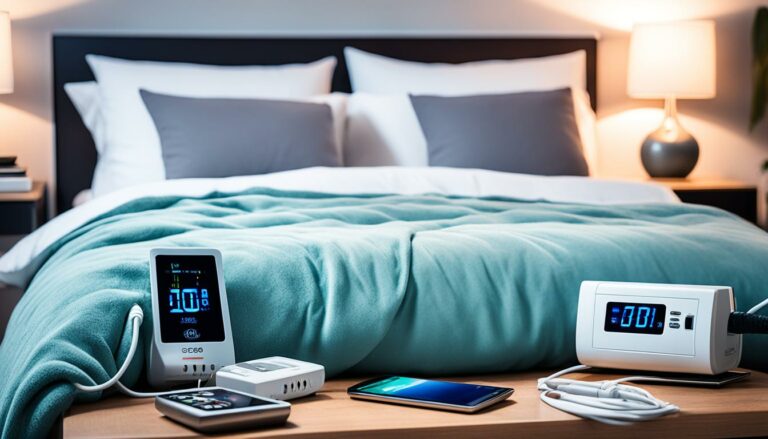Heat Blanket Wattage Guide for Cozy Evenings
Eric Christie stands as a luminary in the bedding industry, with a career spanning nearly four decades since the early 1980s. His journey through the world of bedding has seen him wear many hats – a manufacturer, designer, and retailer, showcasing his versatility and expertise in Read more...
pillowsandbedsheets.com and its partners may earn a commission if you purchase a product through one of our links
When it comes to staying warm and comfortable during chilly evenings, an electric heat blanket can be your best friend. These blankets can provide warmth and coziness, making your nights more relaxing and enjoyable. But how do you choose the right wattage for your heat blanket to ensure optimal performance and energy efficiency?
Understanding heat blanket wattage is essential in selecting the best one for your needs. The wattage rating indicates the power consumption of the blanket and determines how quickly it generates heat. Most household electric blankets have wattage ratings ranging from 100 to 300 watts, with some ultra-warm blankets using 400+ watts. However, the optimal wattage for your heat blanket depends on various factors.
The size of the blanket, the materials used, and the intended use can impact the recommended wattage. For instance, larger blankets may require higher wattages to provide adequate warmth, while smaller ones may need lower wattages. In addition, the materials used in the blanket’s construction can influence its insulating properties and, consequently, the wattage required. Similarly, if you plan to use the blanket in a well-insulated room, you may need less wattage compared to using it in a drafty space.
Considering your individual needs is also crucial. If you are particularly sensitive to the cold or prefer a higher level of warmth, you may want to opt for a blanket with a higher wattage. On the other hand, if you enjoy a more moderate level of warmth, a blanket with lower wattage may suffice.
Checking the voltage and amp rating of the heat blanket is also important for safety reasons. Ensure that the blanket’s wattage is suitable for your home’s power supply and that it won’t overload the circuit. Additionally, it is essential to follow the manufacturer’s guidelines and instructions regarding the optimal wattage level for your specific blanket.
By selecting the right wattage for your heat blanket, you can enjoy cozy evenings while minimizing energy consumption and optimizing comfort. Remember to consider the size, materials, intended use, individual preferences, and safety guidelines to make an informed decision.
Key Takeaways:
- Heat blanket wattage indicates its power consumption and determines the rate at which it draws electricity to generate heat.
- The optimal wattage for your heat blanket depends on factors such as blanket size, materials, intended use, room insulation, and individual preferences.
- Consider your sensitivity to cold and desired level of warmth when choosing the wattage for your heat blanket.
- Check the voltage and amp rating to ensure safe operation and prevent circuit overload.
- Follow the manufacturer’s guidelines for the recommended wattage level based on your specific blanket.
How Electric Blankets Work
Electric blankets are designed to provide extra warmth and comfort during chilly nights. Understanding how they work can help you make the most of your electric blanket, ensuring a restful sleep and optimal coziness.
An electric blanket operates by utilizing internal wiring to generate heat. This wiring is evenly distributed throughout the blanket, allowing for consistent and even heating from top to bottom. When you plug in the electric blanket and turn it on, the wires heat up, producing a soothing warmth that radiates throughout the blanket.
Some electric blankets also come with convenient features such as a thermostat or a remote control. These additional functionalities allow you to easily adjust the temperature settings to your desired level of comfort. Whether you prefer a subtle warmth or extra coziness, a thermostat or a remote control gives you the flexibility to find the perfect temperature for a restful sleep.
Not only do electric blankets provide extra warmth, but they can also offer relief from various health conditions. For individuals dealing with arthritis or menstrual pain, the gentle heat provided by an electric blanket can help alleviate discomfort and promote relaxation.
Using an electric blanket is not only about getting that extra warmth but also about energy efficiency. By using an electric blanket, you can reduce your heating expenses, especially if you use it as an alternative or supplement to traditional heating methods. The controlled and localized heat produced by an electric blanket allows you to focus the warmth on your body, conserving energy while keeping you comfortable throughout the night.
Experience the luxurious comfort and soothing warmth of an electric blanket for a restful sleep and extra coziness.
Key Points:
- Electric blankets work by utilizing internal wiring to generate heat.
- The wiring is evenly distributed throughout the blanket, ensuring even heating.
- Additional features such as a thermostat or a remote control allow for easy temperature adjustment.
- Electric blankets provide extra warmth and can offer relief from various health conditions.
- Using an electric blanket can help reduce heating expenses and promote energy efficiency.
Factors Affecting Electric Blanket Wattage
When choosing an electric blanket, it’s important to consider several factors that can affect its wattage requirements. By understanding these factors, you can select the right wattage level for optimal comfort and energy efficiency.
Blanket Size
The size of the blanket plays a crucial role in determining the wattage it needs. Larger blankets require more wattage to heat the entire surface area effectively. Conversely, smaller blankets may need lower wattage to provide sufficient warmth.
Materials
The materials used in an electric blanket can also impact its wattage. Different fabrics have varying insulation properties, which can affect how efficiently the blanket retains heat. Blankets made from materials with higher fill power or thicker fabric may retain heat better at lower wattages.
Intended Use
The intended use of the electric blanket is another important factor to consider. If you plan to use the blanket in a well-insulated room, you may require a lower wattage as the room’s insulation can help retain heat. On the other hand, if you need extra warmth in a poorly insulated room, a higher wattage blanket may be necessary.
Room Insulation
The level of insulation in your room can impact how effectively the blanket retains heat. Well-insulated rooms require less wattage as they can trap heat and maintain a comfortable temperature. In contrast, poorly insulated rooms may require a higher wattage to compensate for heat loss.
Individual Needs
Individual preferences and needs should also be taken into account when selecting an electric blanket wattage. If you tend to feel colder or have a higher sensitivity to cold temperatures, you may prefer an ultra-warm blanket with a higher wattage. Understanding your personal comfort requirements is crucial in determining the right wattage level.
In summary, factors such as blanket size, materials, intended use, room insulation, and individual needs can all influence the wattage requirements of an electric blanket. Considering these factors will help you choose the appropriate wattage level to ensure optimal comfort and energy efficiency.
Wattage Recommendations for Electric Blankets
When it comes to choosing the right wattage for your electric blanket, it’s essential to consider your bed size and desired warmth level. While these recommendations can serve as a general guideline, it’s always a good idea to check the manufacturer’s guidelines for optimal wattage based on your specific blanket.
Twin/Single Size:
- Low power: 100W
- Medium power: 150-200W
- High power: 250+W
Full/Double Size:
- Low power: 150W
- Medium power: 200-250W
- High power: 300+W
Queen/King Size:
- Low power: 200W
- Medium power: 250-300W
- High power: 350+W
Remember, these wattage recommendations may vary depending on the specific blanket, so it’s important to refer to the manufacturer’s guidelines for the optimal wattage.
Whether you prefer a cozy and warm setting or a subtle comforting heat, adjusting the wattage of your electric blanket can help you achieve the perfect level of warmth for a restful night’s sleep.
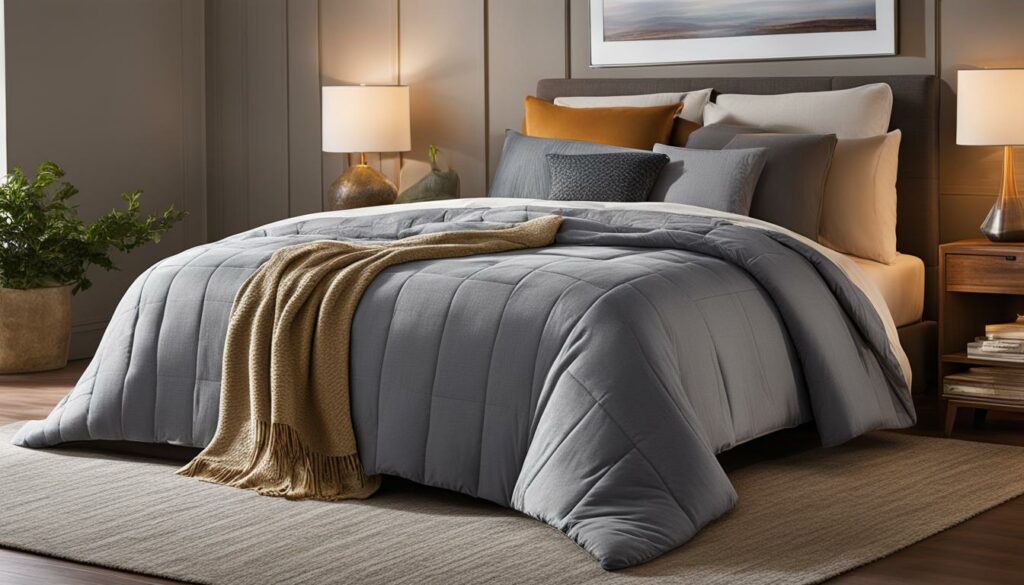
Understanding Electric Blanket Power Consumption
Electric blankets are known for their energy efficiency and low power consumption. Most models typically consume around 100 to 150 watts of power, resulting in minimal costs of approximately two cents per hour in many areas. The actual electricity usage of an electric blanket depends on the duration of use and the heat settings selected.
Calculating the cost of operating an electric blanket is a straightforward process. You can start by dividing the wattage by 1000 to convert it into kilowatts. Then, multiply the kilowatt value by the electricity rate to determine the cost per hour of usage. Keep in mind that electricity rates can vary depending on the location.
For instance, let’s assume you have an electric blanket with a power consumption of 100 watts (0.1 kilowatts) and an electricity rate of $0.15 per kilowatt-hour. The hourly cost of operating the blanket would be:
0.1 kW x $0.15/kWh = $0.015/hour
This means that using the blanket for one hour would cost approximately 1.5 cents.
Energy Efficiency and Cost Savings
Electric blankets are designed to use energy efficiently, making them a cost-effective choice for staying warm. Their low-power consumption compared to other heating appliances, such as space heaters, contributes to their energy efficiency. By using an electric blanket, you can reduce the need for heating the entire room, which can help lower overall energy usage and expenses.
Moreover, electric blankets allow you to zone heat, focusing warmth only where it’s needed—your bed—rather than heating the entire house. This targeted heating approach can lead to additional savings on your energy bills.
While electric blankets offer energy-efficient operation, it’s important to remember to turn them off when not in use to conserve electricity and minimize costs. Additionally, using a programmable timer can help you set specific operating periods, ensuring the blanket is only on when you need it.
Considering Low-Voltage Electric Blankets
Low-voltage electric blankets are an alternative option for those seeking even greater energy efficiency. These blankets operate at 12-24 volts instead of the standard 120 volts, resulting in considerably reduced electricity consumption. While low-voltage blankets offer energy savings, it’s worth noting that they may have a higher initial cost and provide less warmth compared to standard models.
When selecting an electric blanket, consider your energy efficiency preferences and desired level of warmth. Assessing the blanket’s power consumption, along with its ability to meet your comfort needs, can help you make an informed decision.
A Visual Representation of Electric Blanket Power Consumption
| Electric Blanket Wattage | Typical Electricity Usage | Approximate Cost per Hour* |
|---|---|---|
| 100 watts | 0.1 kilowatts | $0.015 |
| 150 watts | 0.15 kilowatts | $0.0225 |
| 200 watts | 0.2 kilowatts | $0.03 |
*Cost calculated based on an electricity rate of $0.15 per kilowatt-hour.
Keep in mind that these figures are estimates and may vary depending on your specific electricity rates and usage patterns.
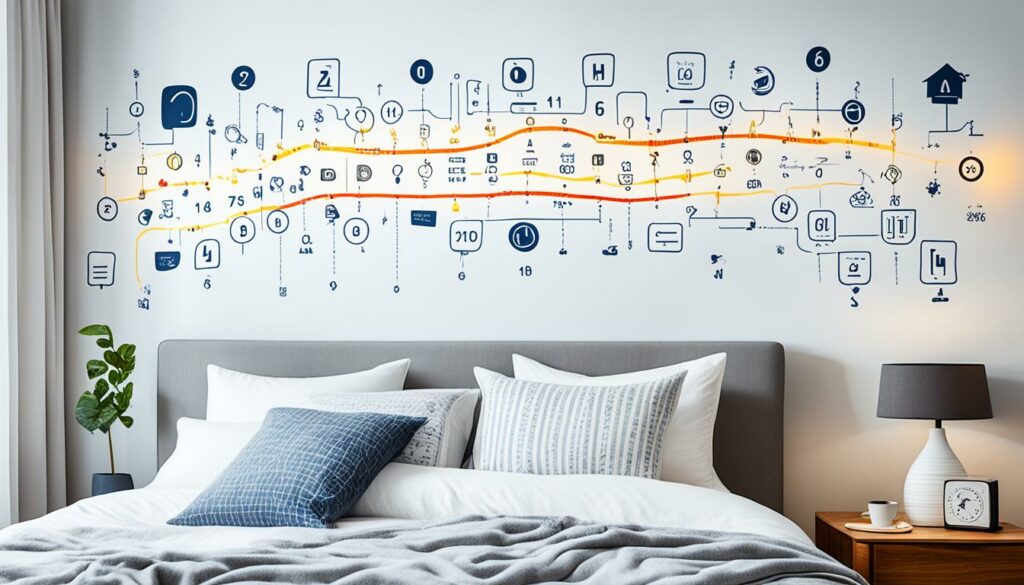
Safety Tips for Using Electric Blankets
When using electric blankets, it is essential to prioritize safety to prevent any potential risks. Follow these tips to ensure a safe and cozy experience:
- Inspect regularly: Regularly check your electric blanket for any signs of wear or damage to the wires or fabric. If you notice any issues, discontinue use and have it repaired or replaced.
- Automatic shutoff: Choose an electric blanket with an automatic shutoff feature. This feature helps prevent extended and unnecessary use, reducing the risk of overheating and electrical accidents.
- Topmost layer: Place the electric blanket as the topmost layer of your bed. Avoid placing additional blankets or comforters on top of the electric blanket to prevent overheating and potential damage.
- Avoid young children: Keep electric blankets away from young children, as they may not have the ability to adjust the temperature or understand safety precautions. Children should always be supervised around electric blankets.
- Avoid diabetes patients: Individuals with diabetes may have reduced sensitivity to heat and may not notice if an electric blanket becomes too hot, leading to potential burns. Consult a healthcare professional before using an electric blanket if you have diabetes.
- Unplug when not in use: Always unplug your electric blanket when you are not using it. This minimizes the risk of accidental overheating or electrical malfunction.
- Avoid wet or damp conditions: Never use an electric blanket if it is wet or damp, as moisture can damage the electrical components and pose a safety hazard. Ensure the blanket is completely dry before using it.
- Avoid folding or creasing: Avoid folding or bunching up your electric blanket while it is turned on. This can cause uneven heat distribution and potentially damage the internal wiring.
- Avoid infants and small children: Do not use electric blankets with infants or small children. Their inability to communicate discomfort or adjust the temperature settings can lead to overheating or burns.
- Avoid pacemakers: If you have a pacemaker or any other medical device, do not use an electric blanket. The electromagnetic fields generated by the blanket may interfere with the proper functioning of these devices.
By following these safety tips, you can enjoy the warmth and comfort of your electric blanket while minimizing any potential risks.
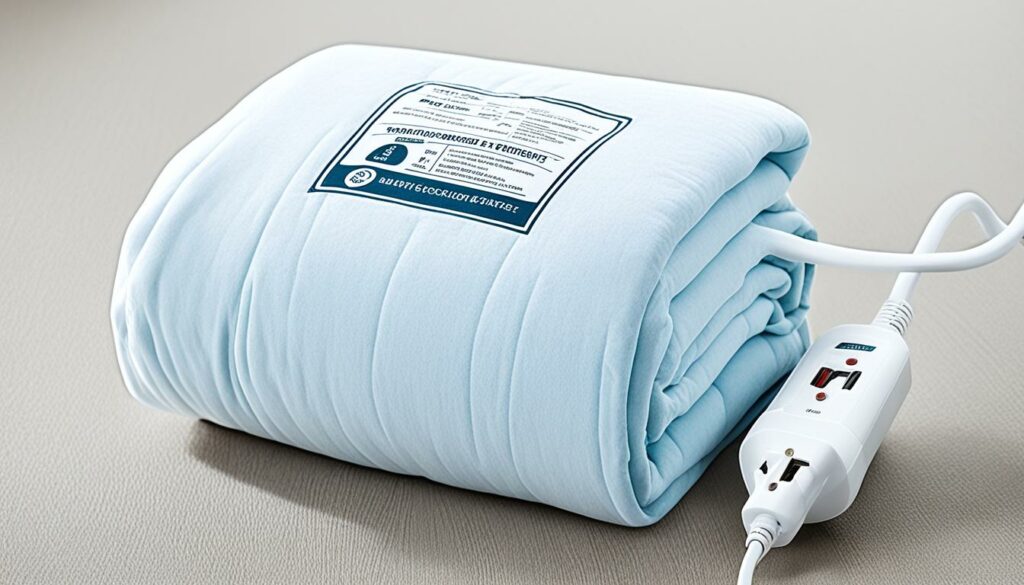
Cost of Powering an Electric Blanket
The cost of using an electric blanket depends on several factors, including its wattage, the duration of use, and the local electricity rates. By understanding these factors and considering them when calculating the cost, you can get a better idea of how much it will impact your energy bill.
To calculate the daily usage cost of an electric blanket, you can follow a simple formula:
Daily Usage Cost = (Wattage x Hours of Use) / 1000 x Electricity Rate
Let’s break down the formula:
- Wattage: This is the power rating of your electric blanket, usually indicated on the packaging or in the manufacturer’s specifications. It represents the amount of electricity the blanket consumes.
- Hours of Use: This refers to the number of hours you typically use the electric blanket each day.
- Electricity Rate: This is the cost of electricity per kilowatt-hour (kWh) in your area. You can find this information on your utility bill or by contacting your electricity provider.
By multiplying the wattage by the hours of use and dividing the result by 1000, you convert the wattage from watts to kilowatts (kW). Then, you multiply the kilowatts by the electricity rate to determine the daily usage cost of your electric blanket.
For example, let’s say you have an electric blanket with a wattage of 150W, and you typically use it for 6 hours a day. If your electricity rate is $0.15 per kWh, the daily usage cost would be:
(150W x 6 hours) / 1000 x $0.15 = $0.135
Once you have the daily usage cost, you can estimate the monthly and yearly costs by multiplying the daily cost by the number of days in a month and then by 12, respectively.
It’s important to note that these calculations are estimates and may vary based on actual usage patterns and electricity rates. However, they provide a useful guideline for understanding the potential cost of powering an electric blanket.
Comparing the Costs of Different Electric Blankets
Electric blankets come in various wattage ratings, and understanding their cost implications can help you make an informed purchasing decision.
Here’s a comparative table showcasing the daily usage costs of different electric blankets, based on their wattage and an assumed 6-hour usage:
| Electric Blanket | Wattage | Daily Usage Cost (Assuming 6-hour usage) |
|---|---|---|
| Blanket A | 100W | $0.09 |
| Blanket B | 200W | $0.18 |
| Blanket C | 300W | $0.27 |
This table illustrates how the daily usage cost increases with higher wattage electric blankets. When deciding on a specific electric blanket, consider not just the upfront cost but also the long-term cost of using the blanket on a daily basis.
By being mindful of the wattage, usage duration, and electricity rates, you can estimate the cost of powering an electric blanket and make an informed decision that suits your budget and energy consumption needs.
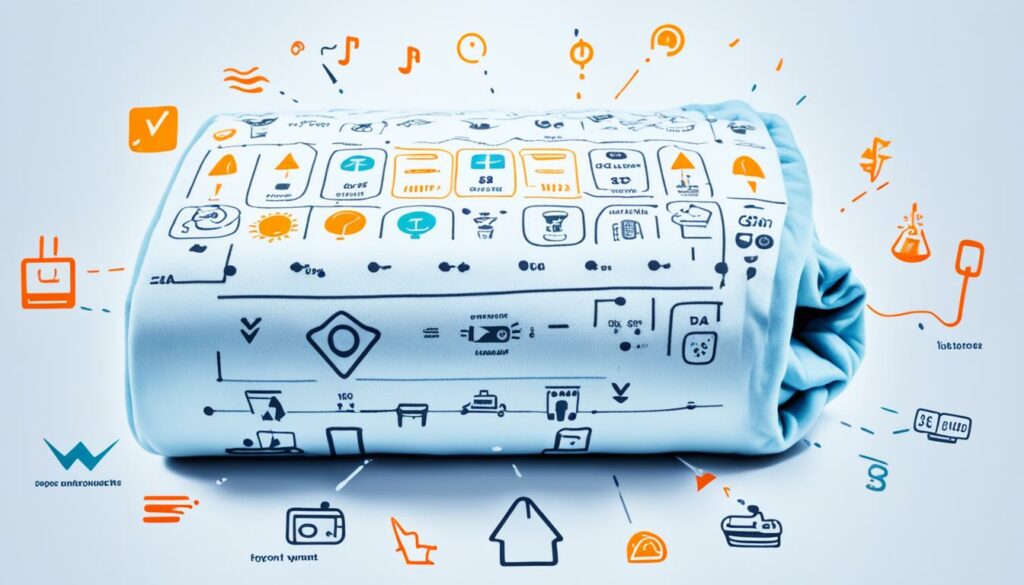
Using Electric Blankets off the Grid
If you find yourself in a situation where accessing regular power is not an option, such as off-grid adventures or camping trips, portable power stations provide a reliable solution for using your electric blanket. The Jackery Explorer series, including models like the 240W, 300W, and 500W, offer a range of options to meet your specific wattage requirements.
Calculating the working hours of a power station is simple. You can use the formula: Working time = Capacity Wh * 0.85 / operating wattage of the device. By considering the power station’s capacity, you can determine how long your electric blanket can be powered in off-grid situations. The Jackery Explorer series provides eco-friendly and convenient solutions, ensuring that you can enjoy the warmth and comfort of your electric blanket wherever you go.
Whether you are embarking on a camping trip or spending time off the grid, the Jackery Explorer series of portable power stations offers the perfect solution to power your electric blanket. With their varying wattage options and efficient working hours, you can rest assured that your blanket will keep you warm and cozy throughout your outdoor adventures.
FAQ
How do electric blankets work?
Electric blankets work by using internal wiring to produce heat. The wiring is evenly distributed throughout the blanket to ensure even heating. When plugged into an electrical outlet, the wires heat up and provide warmth. Some electric blankets come with a thermostat or a remote control to adjust the temperature. They offer an additional layer of warmth and can provide relief from medical conditions such as arthritis and menstrual pain.
What factors affect the wattage requirements of an electric blanket?
Several factors can affect the wattage requirements of an electric blanket. The size of the blanket, the materials used, and the intended use play a role in determining the optimal wattage. A well-insulated room may require a lower wattage, while higher fill power and thicker fabric can retain more heat at lower wattages. Individual needs, such as sensitivity to cold, can also influence the desired wattage for an ultra-warm blanket. Considering these factors is crucial when selecting the appropriate wattage level for optimal comfort.
What are the recommended wattage levels for electric blankets based on bed size?
The recommended wattage levels for electric blankets based on bed size are as follows:
– Twin/Single Size:
– Low power: 100W
– Medium power: 150-200W
– High power: 250+W
– Full/Double Size:
– Low power: 150W
– Medium power: 200-250W
– High power: 300+W
– Queen/King Size:
– Low power: 200W
– Medium power: 250-300W
– High power: 350+W
These recommendations may vary depending on the specific blanket, so it is important to check the manufacturer’s guidelines for the optimal wattage based on the bed size and desired warmth level.
How much does it cost to operate an electric blanket?
The cost of operating an electric blanket depends on its wattage rating and duration of use, and can be estimated based on electricity rates. Electric blankets are generally energy-efficient and have low power consumption. Most models consume around 100 to 150 watts of power, resulting in a minimal cost of approximately two cents per hour in many places. The actual electricity usage depends on the duration and heat settings of the blanket. Calculating the cost of operating an electric blanket involves dividing the wattage by 1000 and multiplying the result by the electricity rate. Low-voltage blankets consume even less electricity, although they may have a higher initial cost and provide less warmth than standard models.
How can I ensure the safe use of an electric blanket?
To ensure the safe use of electric blankets, follow these tips:
– Regularly inspect the blanket for wear or damage to the wires or fabric.
– Choose a model with automatic shutoff to prevent extended and unnecessary use.
– Place the electric blanket as the topmost layer of the bed and avoid folding or bunching.
– Avoid using electric blankets with young children, people with cognitive disabilities, or diabetes patients.
– Unplug the blanket when not in use.
– Do not use the blanket if it is wet or damp.
– Avoid folding or creasing the blanket while it is turned on.
– Do not use the blanket on infants, small children, or anyone who is unable to operate the controls.
– Do not use an electric blanket with a pacemaker.
How can I calculate the cost of using an electric blanket?
The cost of using an electric blanket depends on its wattage, duration of use, and the local electricity rates. To calculate the daily usage cost, multiply the wattage by the number of hours the blanket is used and divide by 1000 to convert to kilowatts. Then, multiply by the electricity rate (usually in cents per kilowatt-hour) to find the daily cost. The monthly and yearly costs can be calculated by multiplying the daily cost by the number of days in a month and then by 12, respectively. It is important to note that these calculations are estimates, and actual costs may vary.
Can I use an electric blanket off the grid or in situations without regular power?
Yes, it is possible to use an electric blanket off the grid or in situations without regular power by using portable power stations. Portable power stations, such as the Jackery Explorer series, offer different options to accommodate the wattage requirements of an electric blanket. The working hours of a power station can be calculated using the formula: Working time = Capacity Wh * 0.85 / operating wattage of the device. The Jackery Explorer series provides eco-friendly and convenient solutions for powering electric blankets and other essential devices in off-grid situations.
Eric Christie stands as a luminary in the bedding industry, with a career spanning nearly four decades since the early 1980s. His journey through the world of bedding has seen him wear many hats – a manufacturer, designer, and retailer, showcasing his versatility and expertise in Read more...


